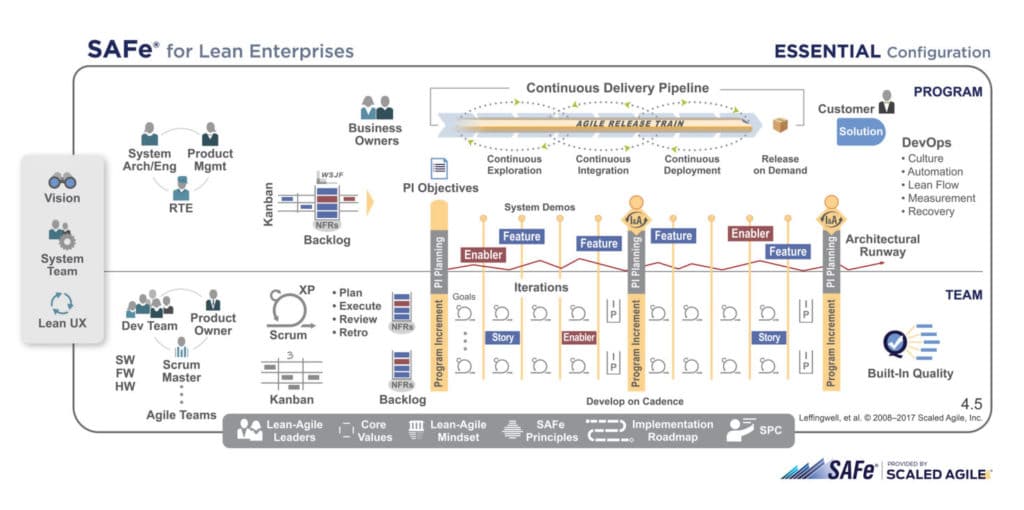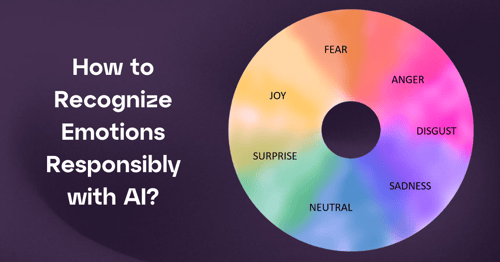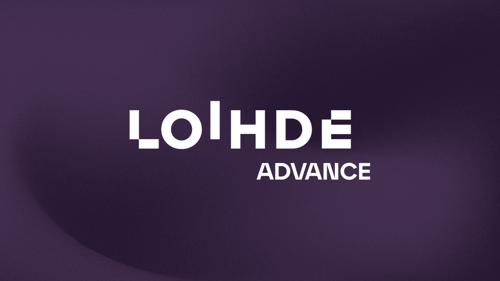SAFe 4.5 in less than five minutes
Scaled Agile listened to its customers and community members, and based on the input improved the framework for scaled agile development. Loihde Advisory was a part of an international group who contributed to the reform, but what has ultimately changed in SAFe 4.5? Improved version should be more streamlined, more agile and more innovative. This post highlights the key changes compared to the previous SAFe 4.0 version.
 Source:
Scaled Agile
Source:
Scaled Agile
Four key areas of improvements
1. Adjust the model to match the size of your organization
One size does not fit all. This was already taken into account in the previous version by introducing an optional Value Stream. SAFe 4.5 allows you to configure the model to suit your needs, for example based on the size of the organisation or complexity of the development process. SAFe 4.5 has four configurations:
- Essential SAFe, that is the most basic configuration. This is the starting point and contains essential elements required to utilise the framework. Essential SAFe has two layers: program and team. When the company and its product portfolio grow, SAFe will scale up accordingly.
- Portfolio SAFe brings on an additional level, Portfolio, which refers to portfolio management and enables developing and managing multiple simultaneous solutions.
- Large Solution SAFe is intended for major development projects.It is built on top of Essential SAFe, but excludes portfolio management. So there are still three layers.
- Full SAFe contains all the above. It is recommended for large companies and massive projects with hundreds of people, multiple teams and lots of integrations.
2. Rapid testing of design hypotheses
The core of Lean Agile is program execution and continuous improvement through feedback cycles. Here, SAFe 4.5 returns to its roots and introduces the Lean Startup Cycle to foster innovation. Hypothesize-Build-Measure-Learn concept puts weight on business hypotheses and their development, where functionality is tested with the simplest solution and real users ( MVP ).
Moreover, SAFe 4.5 puts more emphasis on user experience. Lean UX framework is also based on a cycle that sets and validates hypotheses on added value of each new feature. The functionality and benefits are measured as early as possible before additional features are developed.
So, Lean UX does not solely focus on design aspect of user experience, but it ensures that value and the purpose of the design are always present in the design process.
3. DevOps and continuous delivery pipeline
DevOps was already included in the previous SAFe 4.0, but now "release any time " is integrated into a Continuous Delivery Pipeline. This means SAFe enterprises may aim at accelerated release cycle and expect more frequent delivery of new features from each Agile Team, ART and Solution Train.
Solutions can be defined, developed and published frequently in short cycles. Thus the value of experimenting is immediately visible and measurable. Project management is no longer an entity that knows the price of everything and the value of nothing.
New features are instantly put to the test and their productisation does not require extra operational effort, because DevOps relies on strong automation, for example in terms of testing and release management.
4. Implementation Guidelines, Implementation Roadmap
The SAFe Implementation Roadmap helps customers to comprehend and deploy a rather broad and even complex SAFe framework. The roadmap consists of 12 articles that showcase the strategy and required actions in implementing the framework. Each article is based on experience and feedback from the customers and past implementations.
Adopting a new mindset and changing the way of working are critical topics for any company, big or small. Why should we change? What is the benefit of a new operating model? How to make a difference? When can we deploy even a portion of the needed changes? These step-by-step articles guide enterprises towards successful SAFe implementation.
Compatibility
Did everything change with SAFe 4.5? Absolutely not, but it's a revision that will clarify the overall picture and give better tools for SAFe users. If the company's product development is based on, for example, SAFe 4.0, the same features are still there and new ones can be utilised when deemed necessary.
Our Scaled Agile Framework specialists here at Loihde Advisory will help you to train basic SAFe skills for your organisation, initiate change and introduce new ways of working. Read more about our services here.


